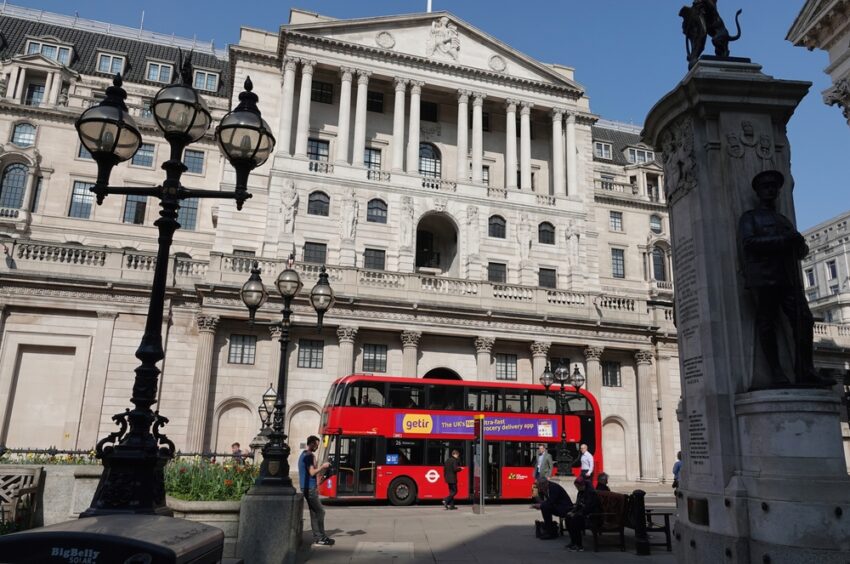Investment focus drives Rachel Reeves’ strategy to revitalise UK economy
Rachel Reeves' budget aims to boost UK growth with a focus on investment. By tweaking fiscal rules, the Chancellor plans to unlock billions for infrastructure, green energy, and more, countering years of sluggish growth. Read more: Investment focus drives Rachel Reeves’ strategy to revitalise UK economy


The UK economy has been mired in low growth for years, a problem exacerbated since the 2008 global financial crisis. Despite a few short-term recoveries, average annual growth has been consistently weak, leading to stagnating living standards.
A striking indicator of this trend is that real wages in the UK are barely higher than they were 16 years ago, marking the worst run in at least a century. With this backdrop, something must change, and Rachel Reeves believes she has the solution: investment.
In her upcoming budget, Reeves is set to make a bold move, signalling a shift from previous fiscal strategies. Her focus on investment is expected to be the most significant budget move since the 2010 emergency budget by David Cameron and George Osborne. This budget will be crucial for setting Labour’s economic agenda after 14 years of Conservative-led governments, and it is equally important in halting the party’s slide in the polls.
The Chancellor’s plans include around £40 billion in fiscal tightening, largely funded by tax rises, including increases in capital gains tax and employers’ national insurance contributions. However, this will be balanced by a significant increase in public investment, with funds likely allocated to infrastructure projects such as railways, bridges, and green energy.
This budget could potentially be the largest in cash terms seen in three decades. Reeves plans to finance a £20 billion boost to public investment by adjusting fiscal rules, allowing the Office for Budget Responsibility (OBR) to factor in a wider range of government assets and liabilities in its financial forecasts.
By shifting from using public sector net debt excluding Bank of England debt (PSND ex BoE) to a broader measure like public sector net financial liabilities (PSNFL), the Chancellor could gain room to borrow up to £50 billion more. The inclusion of assets such as the student loan book and government equity stakes lowers the debt-to-GDP ratio, creating fiscal headroom.
How Reeves decides to allocate this windfall and the quality of her investment choices will be crucial to maintaining confidence in the bond markets. She must demonstrate to investors and the OBR that these measures will lead to growth.
For years, low investment has held back the UK economy, which lags behind many of its peers. Since 2000, the UK has ranked near the bottom of the Organisation for Economic Co-operation and Development (OECD) countries in terms of public investment. This decline can be attributed to successive Conservative chancellors slashing capital spending to meet fiscal targets, resulting in limited growth.
If previous Conservative fiscal plans, including those introduced by Jeremy Hunt, had continued, public investment was set to decline further, dropping from around 2.5% of GDP to just 1.5% by 2029/30. Reeves aims to reverse this trend, taking the lead in raising public investment to kickstart growth.
James Smith, research director at the Resolution Foundation, commented, “The government should take the lead by getting the UK off the bottom of the OECD league when it comes to public investment. In this way, it can boost growth directly but also crowd in more private-sector investment.”
Lord Jim O’Neill, a former Treasury adviser, stated, “Borrowing to invest is not only good but essential for this government with its growth ambitions. Given the UK’s long-standing problem with weak investment, the government, as the most patient investor, must demonstrate serious ambition.”
Recent reports from the OBR have also signalled that increasing public investment could have a long-term positive impact. It suggests that a 1% increase in public investment relative to GDP could raise the economy’s maximum output by 2.5% over 50 years.
The International Monetary Fund (IMF) supports this view, noting that public investment can lead to higher output, attract private investment, and lower unemployment, without significantly impacting the debt ratio. However, the strategy is not without risks. Increased borrowing can lead to higher interest rates, potentially discouraging private investment, and mismanagement of funds can waste taxpayer money.
Given Labour’s substantial majority in Parliament, Reeves’ biggest hurdle will be managing bond market sentiment. The experience of Liz Truss, who became the shortest-serving prime minister due to market backlash against unfunded tax cuts, serves as a stark reminder of the power of bond traders.
Truss’s fiscal failure stemmed from preventing scrutiny by the OBR and unveiling unfunded tax cuts during a global bond market sell-off. Unlike tax cuts, borrowing for investment can be viewed more favourably by the bond market, as highlighted by Tom Railton, director of the campaign group Invest in Britain, who stated, “Bond markets can differentiate between various kinds of borrowing.”
Deutsche Bank has raised concerns that the government may need to raise more than £300 billion through gilts, with the Bank of England also selling off £100 billion in bonds annually. With governments around the world competing for investor funds, the UK needs to communicate effectively to maintain confidence.
Mohamed El-Erian, president of Queens’ College, University of Cambridge, said, “Markets understand that productivity-enhancing investments support longer-term growth, improve creditworthiness, and strengthen debt sustainability. The government must clearly communicate how its budget measures align with its growth objectives.”
To bolster credibility, the government has introduced the Office for Value for Money, signalling its intent to be accountable to investors. Dominic Caddick, an economist at the New Economics Foundation, noted that government bond yields are often more sensitive to the Bank of England’s reactions than fiscal policies themselves.
Rachel Reeves is also expected to update fiscal rules, a move that has been widely anticipated. The current rules have been exploited by past governments, scheduling unrealistic spending cuts to meet debt reduction targets over the OBR’s forecasting period. Adjustments to the rules, particularly a shift to PSNFL, would create additional borrowing capacity by broadening the government’s balance sheet to include more assets.
Ben Zaranko from the Institute for Fiscal Studies warned against focusing too narrowly on a single measure, which could lead to policy manipulation. Instead, he advocated for rules that take into account a broader range of indicators to ensure fiscal policy credibility.
As Reeves prepares to deliver her budget, many are hopeful that a shift to investment-led growth could be the key to unlocking the UK’s economic potential. James Smith from the Resolution Foundation put it succinctly: “There is no route to faster sustained growth that doesn’t include investing more. The country needs to stop living off its past and invest in its future.”
Read more:
Investment focus drives Rachel Reeves’ strategy to revitalise UK economy
What's Your Reaction?





































.jpg?#)
















